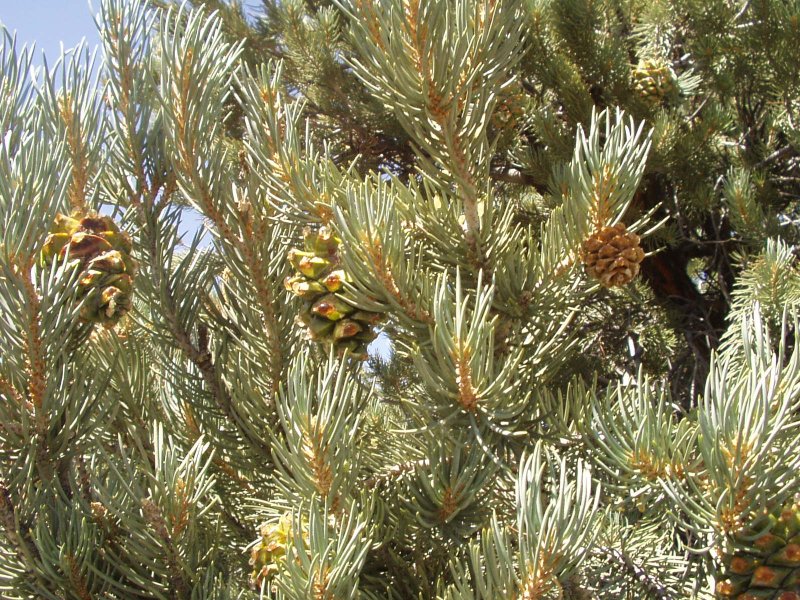- Pinyon pine
Taxobox
name = Pinyon pines

image_width = 240px
image_caption = Single-leaf Pinyon ("Pinus monophylla" subsp. "monophylla")
regnum =Plant ae
divisio =Pinophyta
classis = Pinopsida
ordo =Pinales
familia =Pinaceae
genus = "Pinus"
subgenus = "Ducampopinus"
subdivision_ranks = Species
subdivision = Section "Cembroides"
"Pinus cembroides"
"Pinus orizabensis"
"Pinus johannis"
"Pinus culminicola"
"Pinus remota"
"Pinus edulis"
"Pinus monophylla"
"Pinus quadrifolia"
Section "Rzedowskiae"
"Pinus rzedowskii"
"Pinus pinceana"
"Pinus maximartinezii"
Section "Nelsoniae"
"Pinus nelsonii"The pinyon (or piñon)
pine group grows in the southwesternUnited States and inMexico . The trees yield edible pinyon nuts, which were a staple of the Native Americans, and are still widely eaten. The fragrance of the wood, especially when burned, is unmistakable.There are eight species of true pinyons ("
Pinus " subsection "Cembroides"):
* "Pinus cembroides" –Mexican Pinyon
* "Pinus orizabensis" –Orizaba Pinyon
* "Pinus johannis" –Johann's Pinyon or Border Pinyon (includes "P. discolor")
* "Pinus culminicola" –Potosi Pinyon
* "Pinus remota" –Texas Pinyon or Papershell Pinyon
* "Pinus edulis" –Colorado Pinyon or Two-needle Pinyon
* "Pinus monophylla" –Single-leaf Pinyon
* "Pinus quadrifolia" –Parry Pinyon (includes "P. juarezensis").These additional Mexican species are also related and mostly called pinyons:
* "Pinus rzedowskii" –Rzedowski's Pine
* "Pinus pinceana" –Weeping Pinyon
* "Pinus maximartinezii" –Big-cone Pinyon
* "Pinus nelsonii" –Nelson's Pinyon as are also the threebristlecone pine s of the high mountains of the SW USA, and theLacebark Pine s of Asia.Some of the species are known to hybridise, most notably "P. quadrifolia" with "P. monophylla", and "P. edulis" with "P. monophylla".
The
Pinyon Jay ("Gymnorhinus cyanocephalus") takes its name from the tree, and pinyon nuts form an important part of its diet. It is very important for regeneration of pinyon woods, as it stores large numbers of the seeds in the ground for later use, and excess seeds not used are in an ideal position to grow into new trees. TheMexican Jay is also important for the dispersal of some pinyon species, as, less often is theClark's Nutcracker . Many other species of animal also eat pinyon nuts, without dispersing them.External links
* [http://www.pinetum.org/Lovett/classification.htm Pine classification]
* [http://www.pinetum.org/cones/PNDucampopinus.htm Arboretum de Villardebelle] Images of the cones of all the pinyons and allied pines
*" [http://www.fs.fed.us/database/feis/plants/tree/pinmon/introductory.html Pinus monophylla] " U.S. Forest Service
*" [http://www.fs.fed.us/database/feis/plants/tree/pincem/introductory.html Pinus cembroides] " U.S. Forest Service
*" [http://www.fs.fed.us/database/feis/plants/tree/pinqua/introductory.html Pinus quadrifolia] " U.S. Forest Service
*" [http://www.fs.fed.us/database/feis/plants/tree/pinedu/introductory.html Pinus edulis] " U.S. Forest Service
Wikimedia Foundation. 2010.
